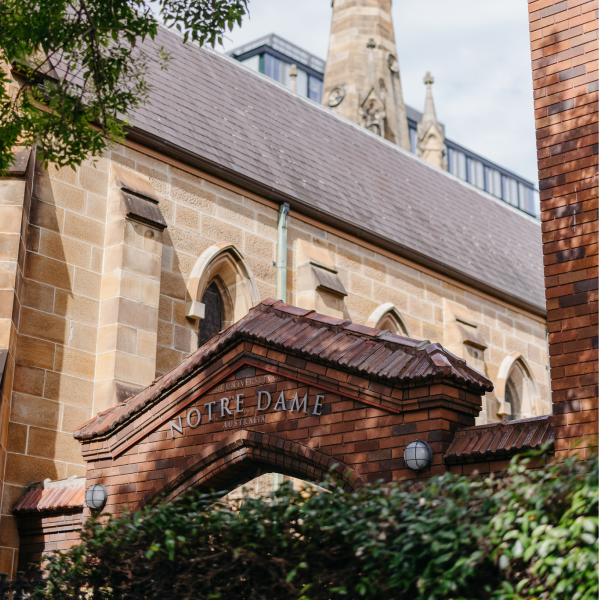Introducing UNDA
We’re committed to offering a unique, fulfilling education experience.
We believe the role of a modern Catholic university is much more than the creation and transmission of knowledge. It’s something much deeper.
Our students are our number one priority. We take great pride in educating the whole person, the academic, social, physical and spiritual dimensions and are deeply committed to supporting our students. In doing so, we encourage our students to thrive, and make important contributions to our communities.
We also encourage and support our staff in the same way – to ensure each of them are not just employees of Notre Dame, but are part of a wider community with the opportunity to make a difference.
We believe in the power of education to change lives, form good citizens, and help people be the best version of themselves.

Our Objects are at the heart of all we do as a Catholic university. These founding Objects reflect our traditions and practices to welcome students of all faiths and beliefs from around the world.
Our Objects have guided our growth and development from a small but enthusiastic intake of just 50 postgraduate education students on our Fremantle Campus in 1992 – to today’s vibrant community of around 12,000 students across all three campuses.
We are committed to the harmony of faith and reason, which underpins our loyalty to the Church, academic life and service to the community.
Notre Dame has adopted a set of principles which demonstrate how we carry out our mission. The guiding principles are:
Notes written by Fr. John Neill op Trustee of the University 1990-2009
We’re committed to offering a unique, fulfilling education experience.
We encourage our staff and students to give back to the wider community.
Outlines our vision to enhance our university and build for the future.
Notre Dame,
Mother of Jesus and our Mother,
We ask you to guide our University.
Mary, as you cared for Jesus,
Show a loving care for us,
As we expand our minds in study and research,
As we open our hearts to future possibilities,
And extend our hands to those who are in need.
Mary, Seat of Wisdom,
Teach us to care for the land and the people
Of this country of the Southern Cross.
In this academic community dedicated to you,
Help us find new yet faithful ways
Of bringing the message of Jesus to Australia
And to those who share this region of the earth with us.
Amen
Our university prayer encourages us to engage in both learning and research while keeping our hearts open to new possibilities.


Connect with Notre Dame on Social Media
Australia
Fremantle
Broome
Sydney